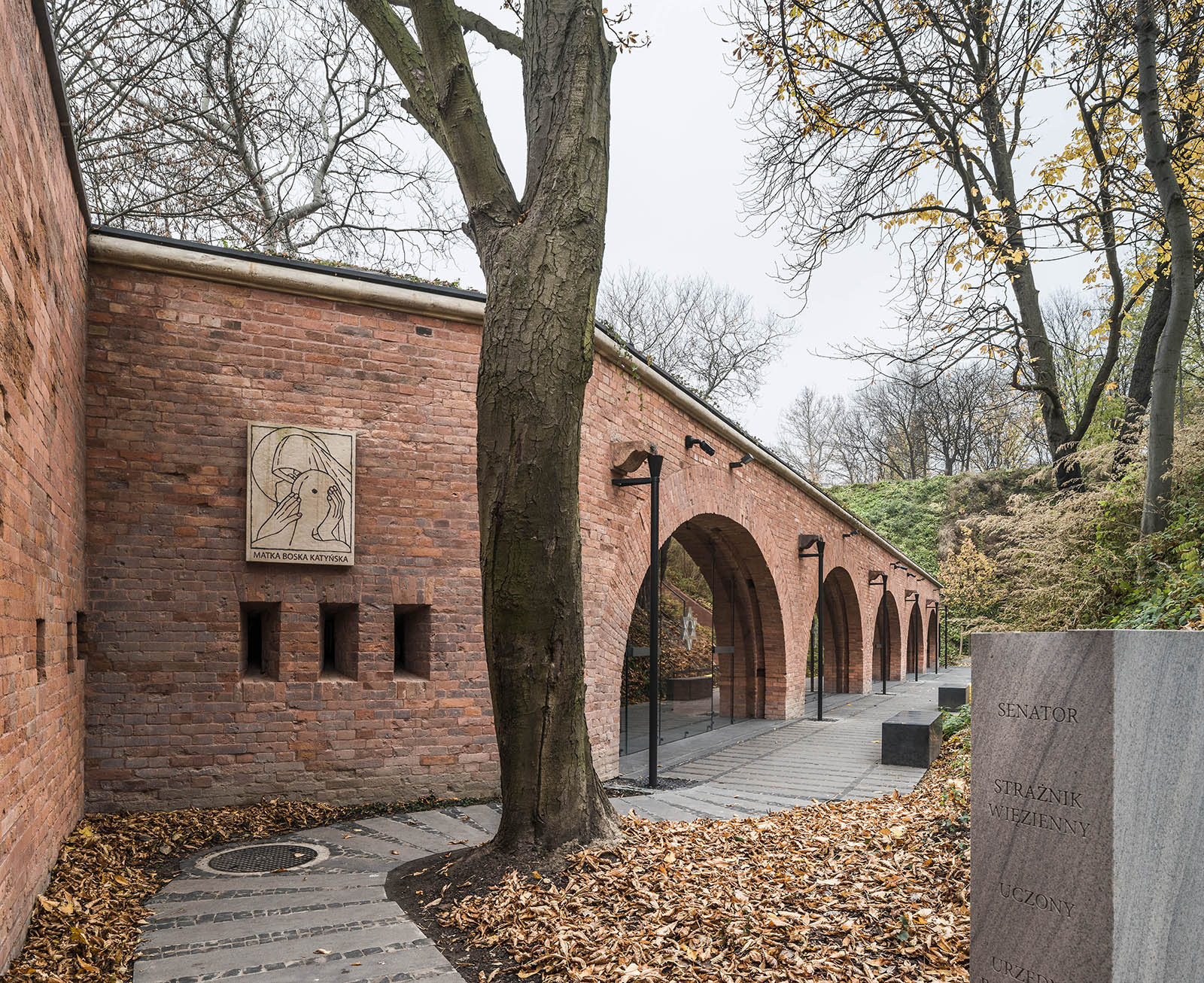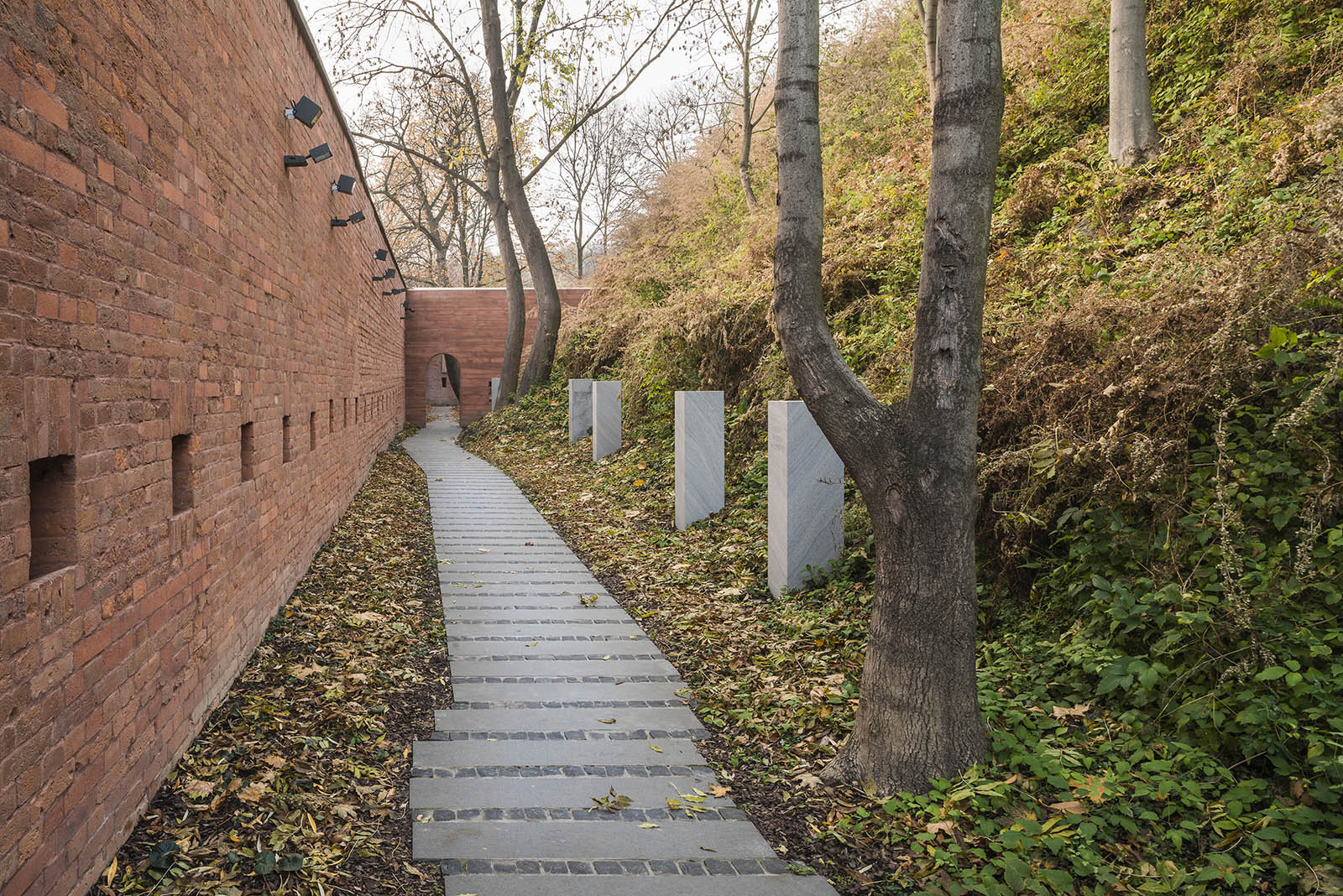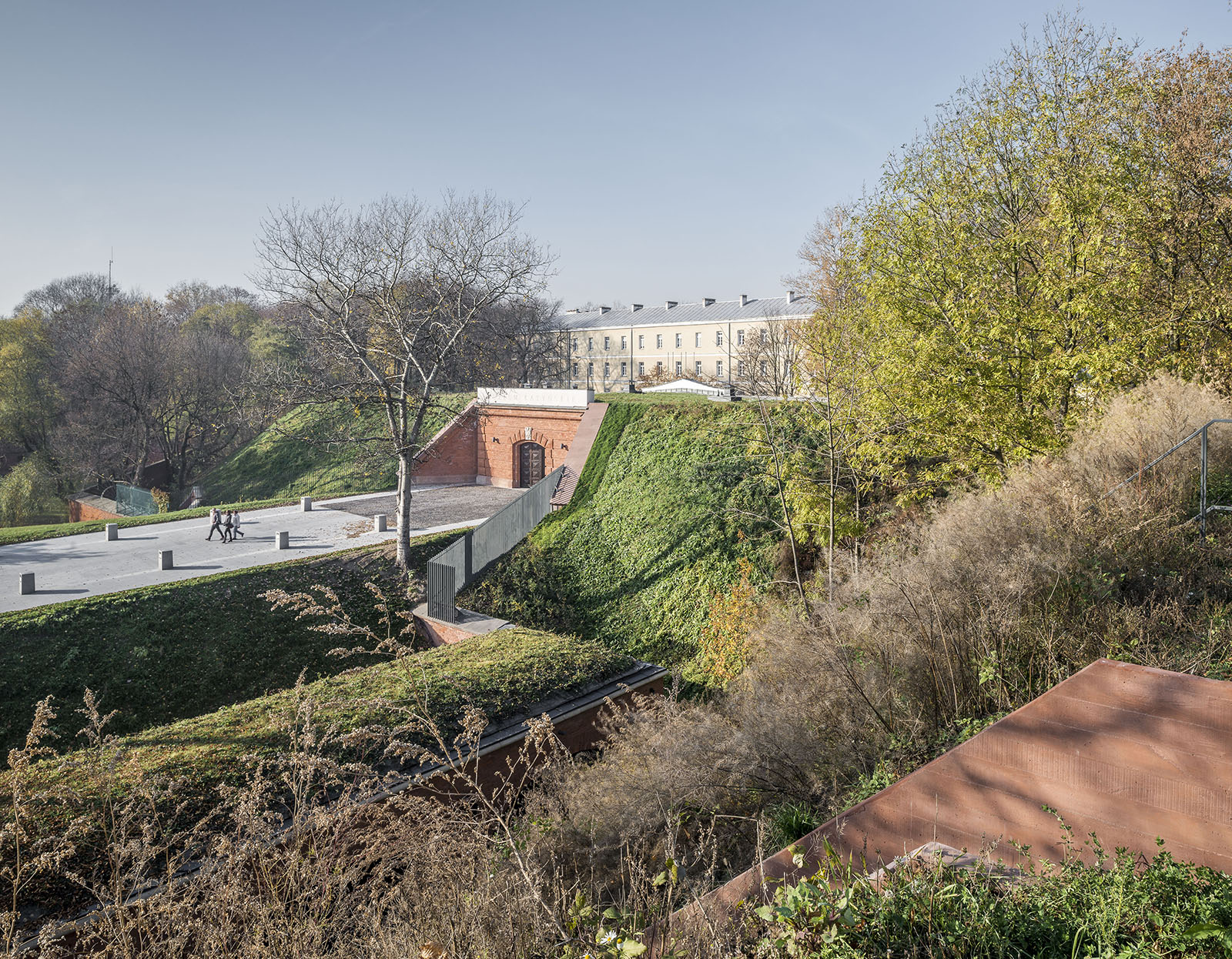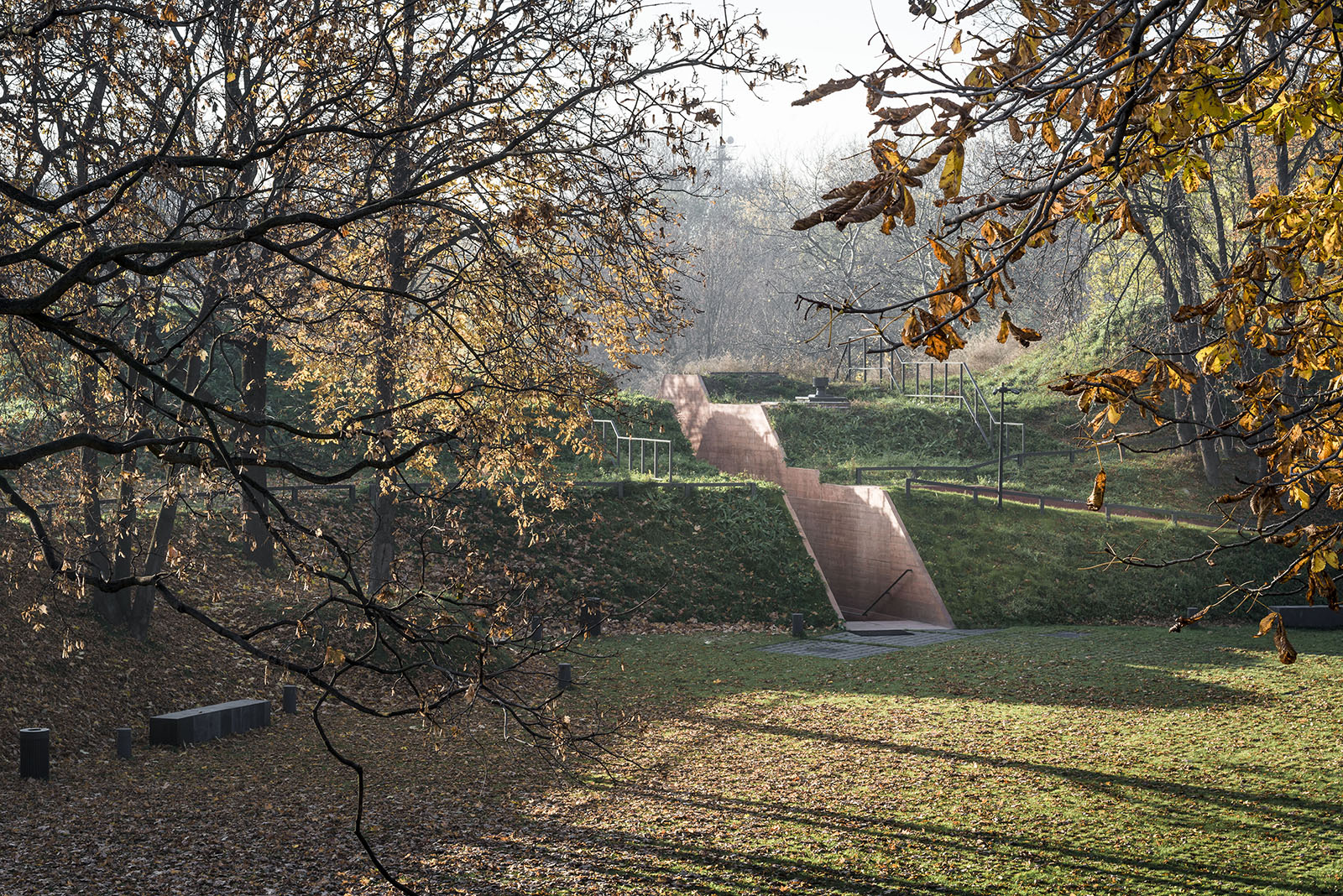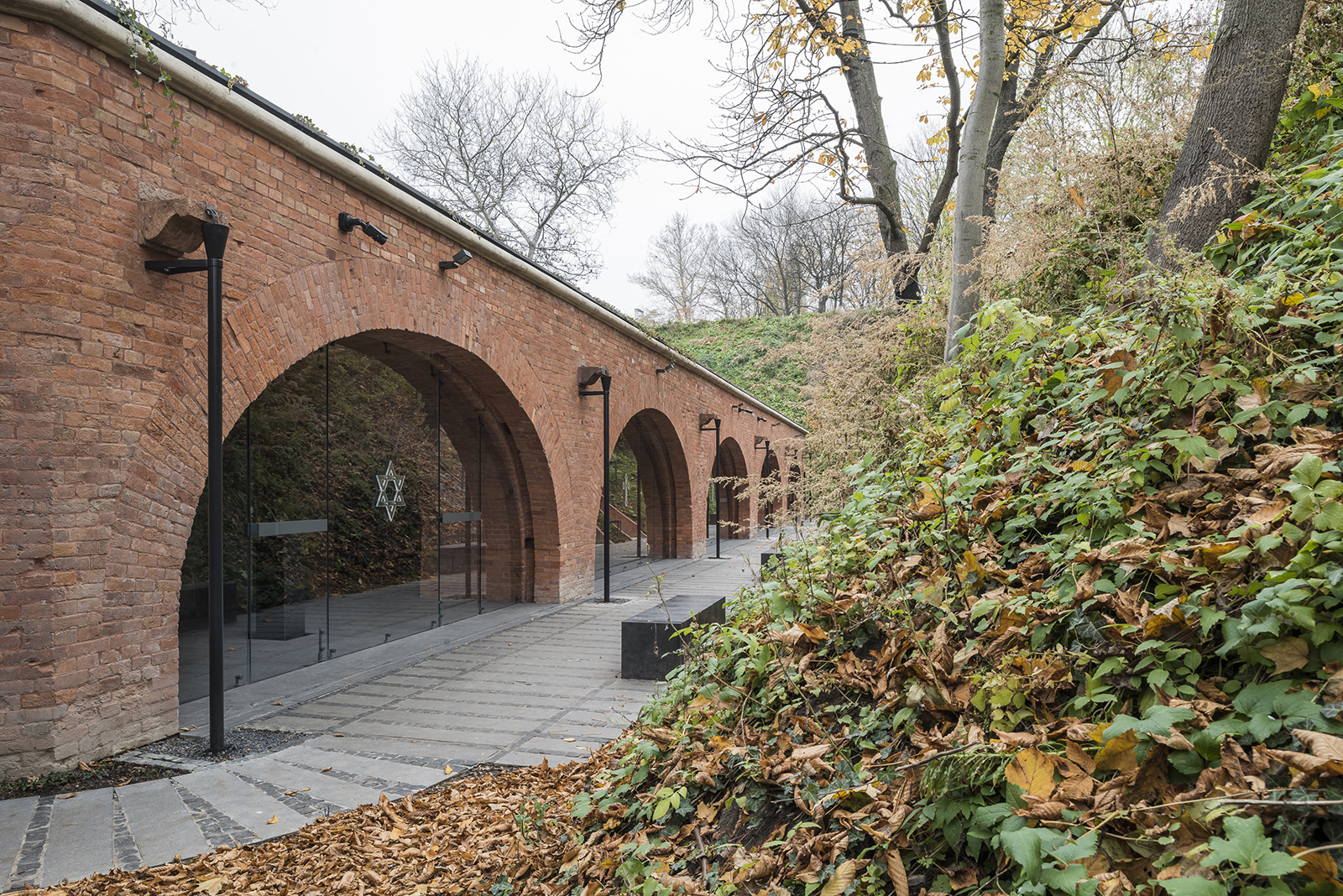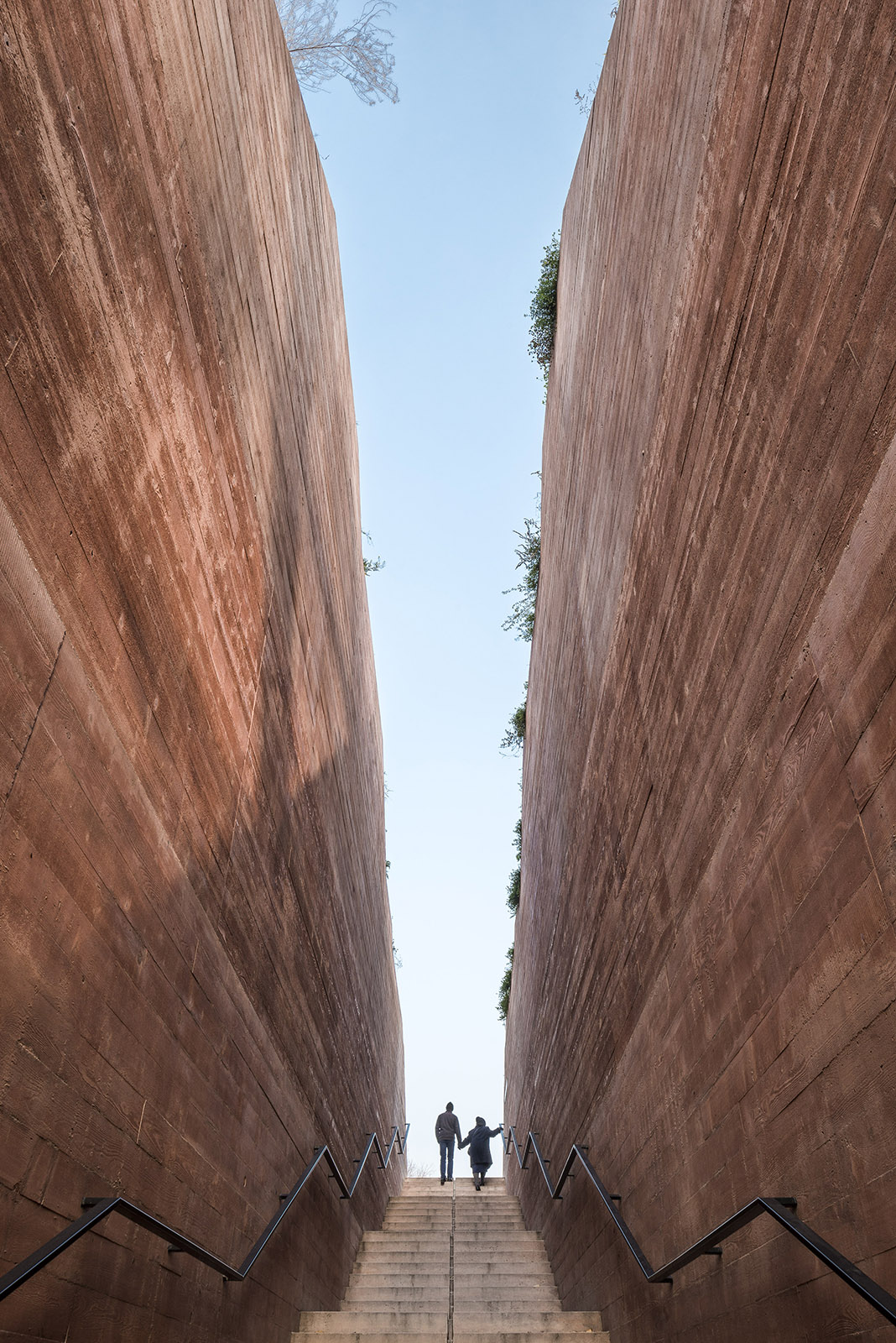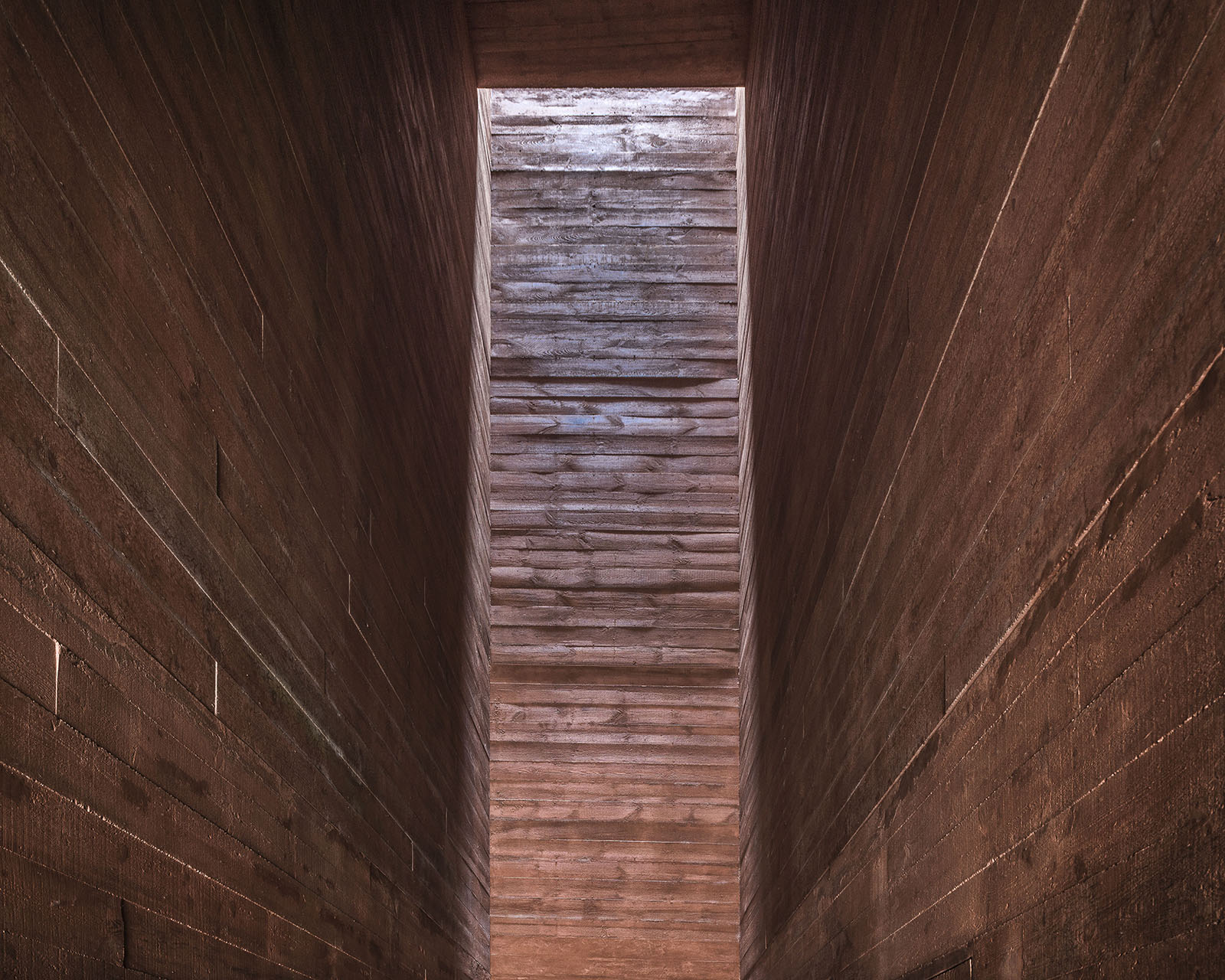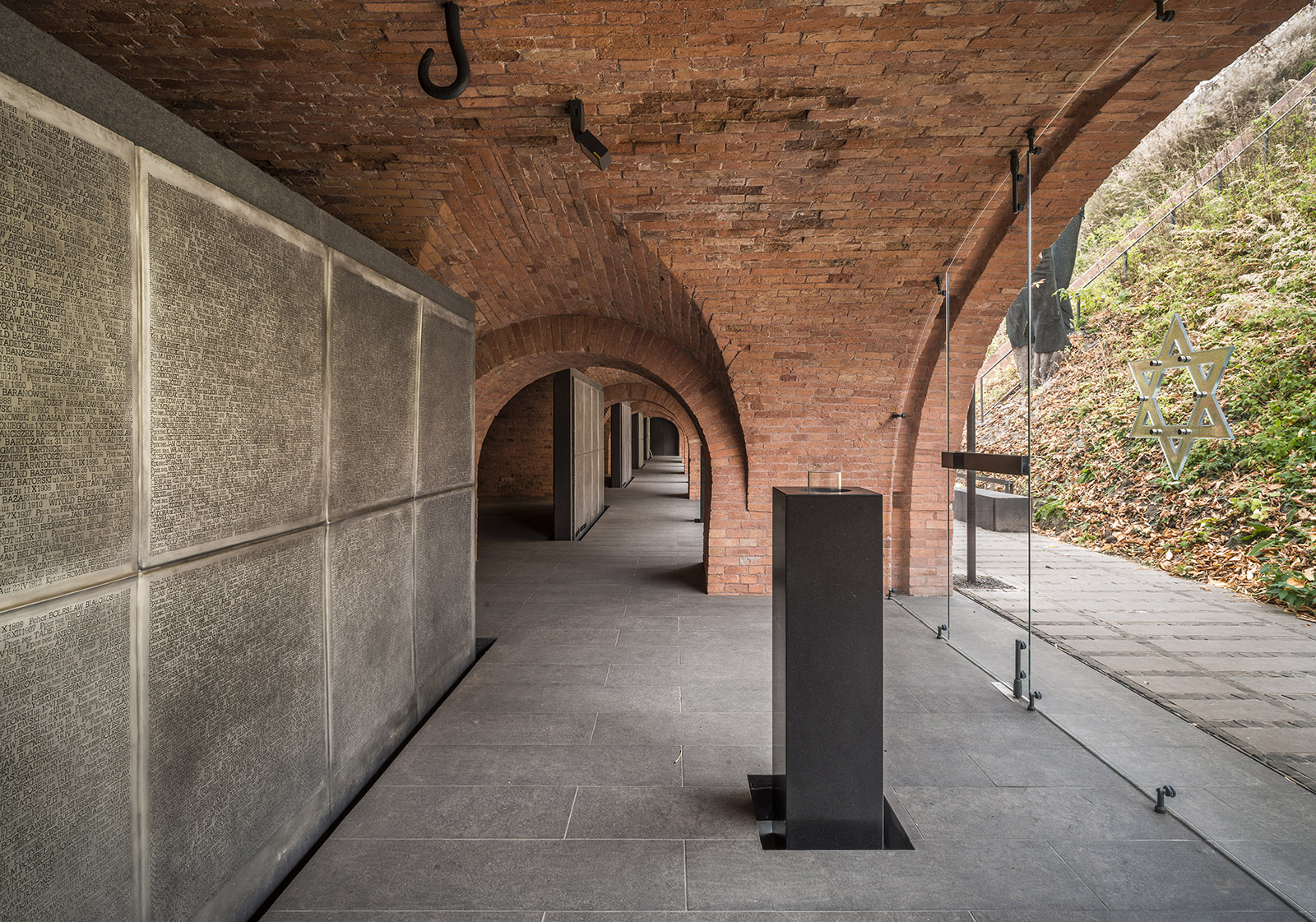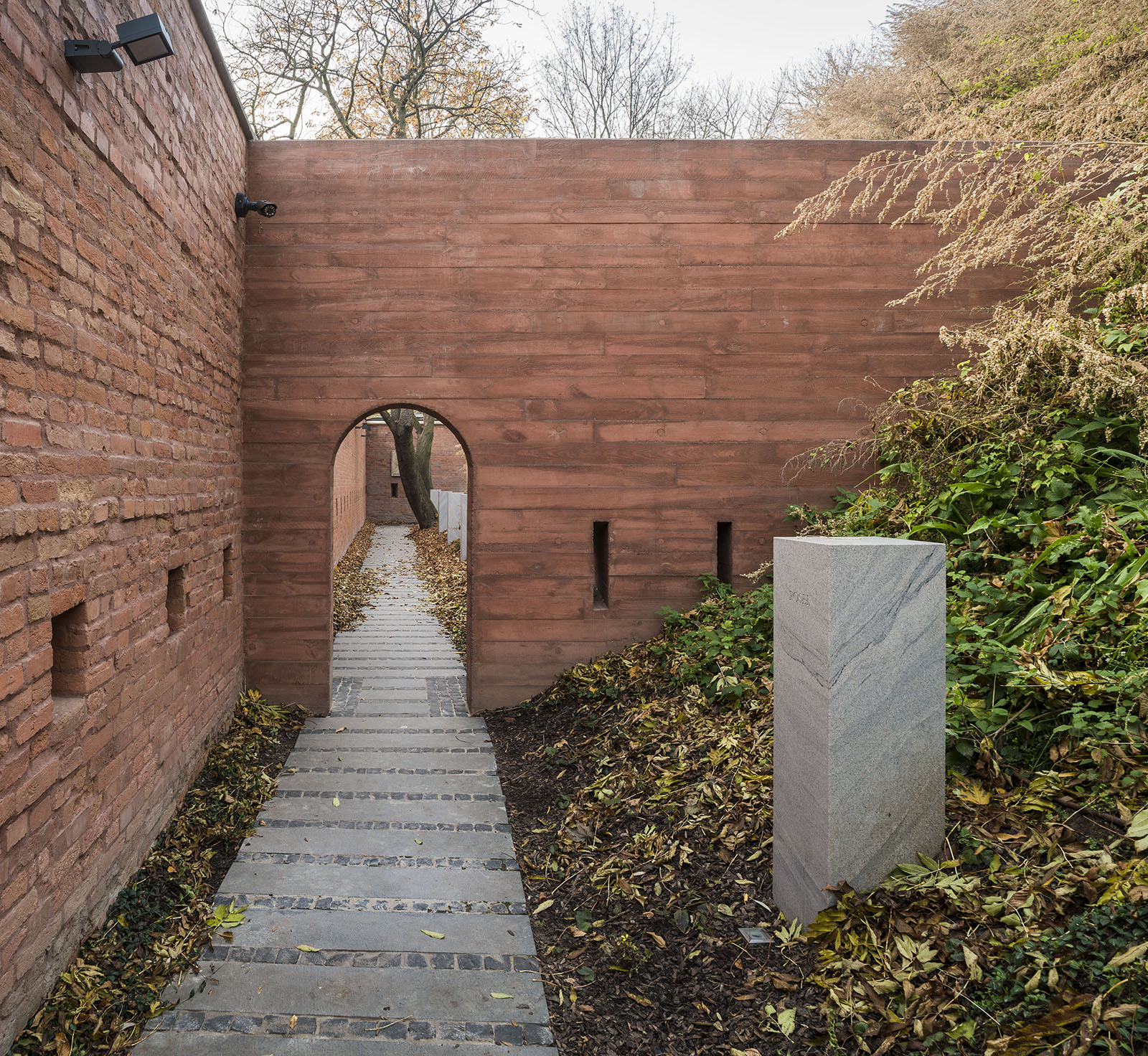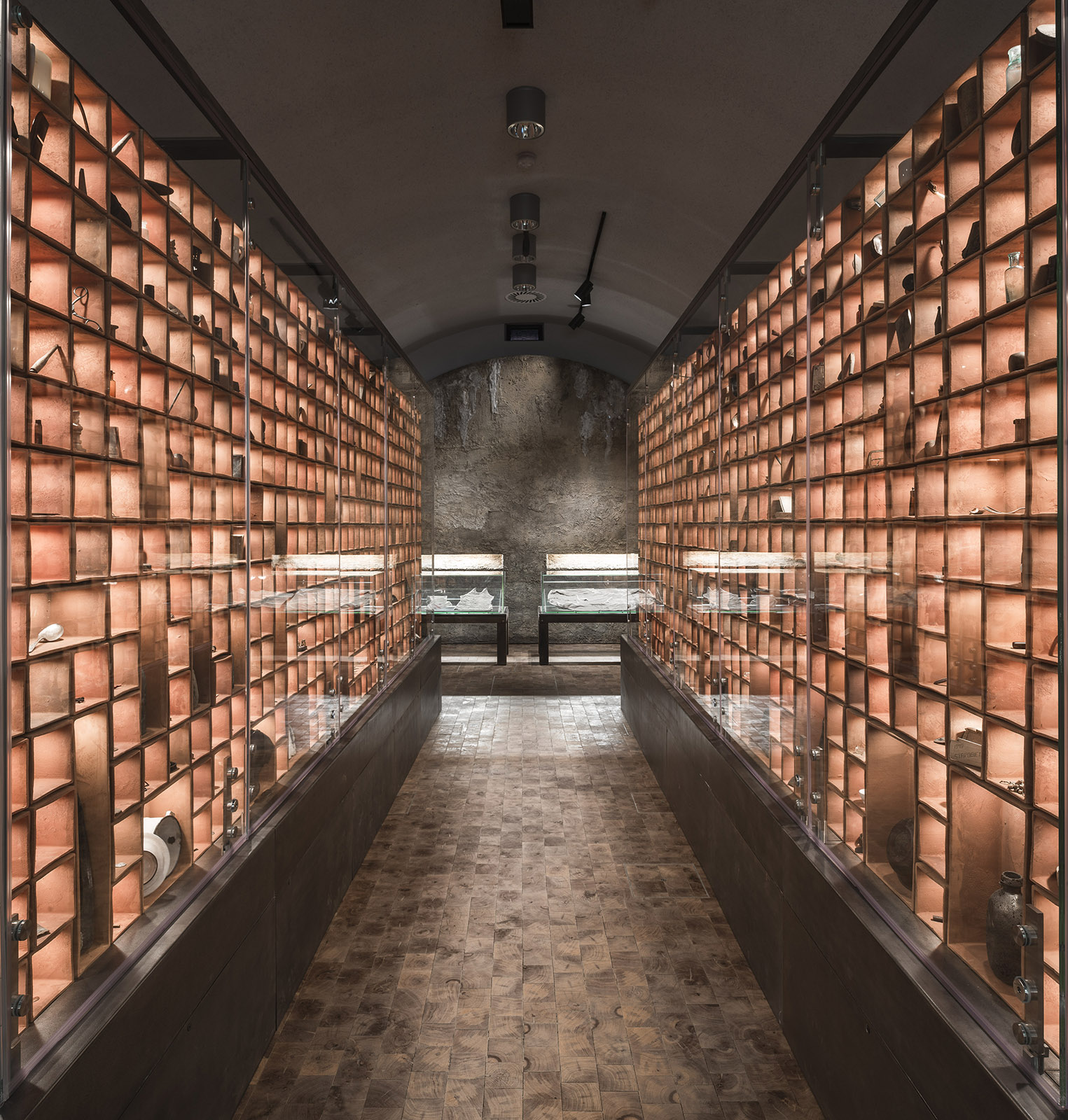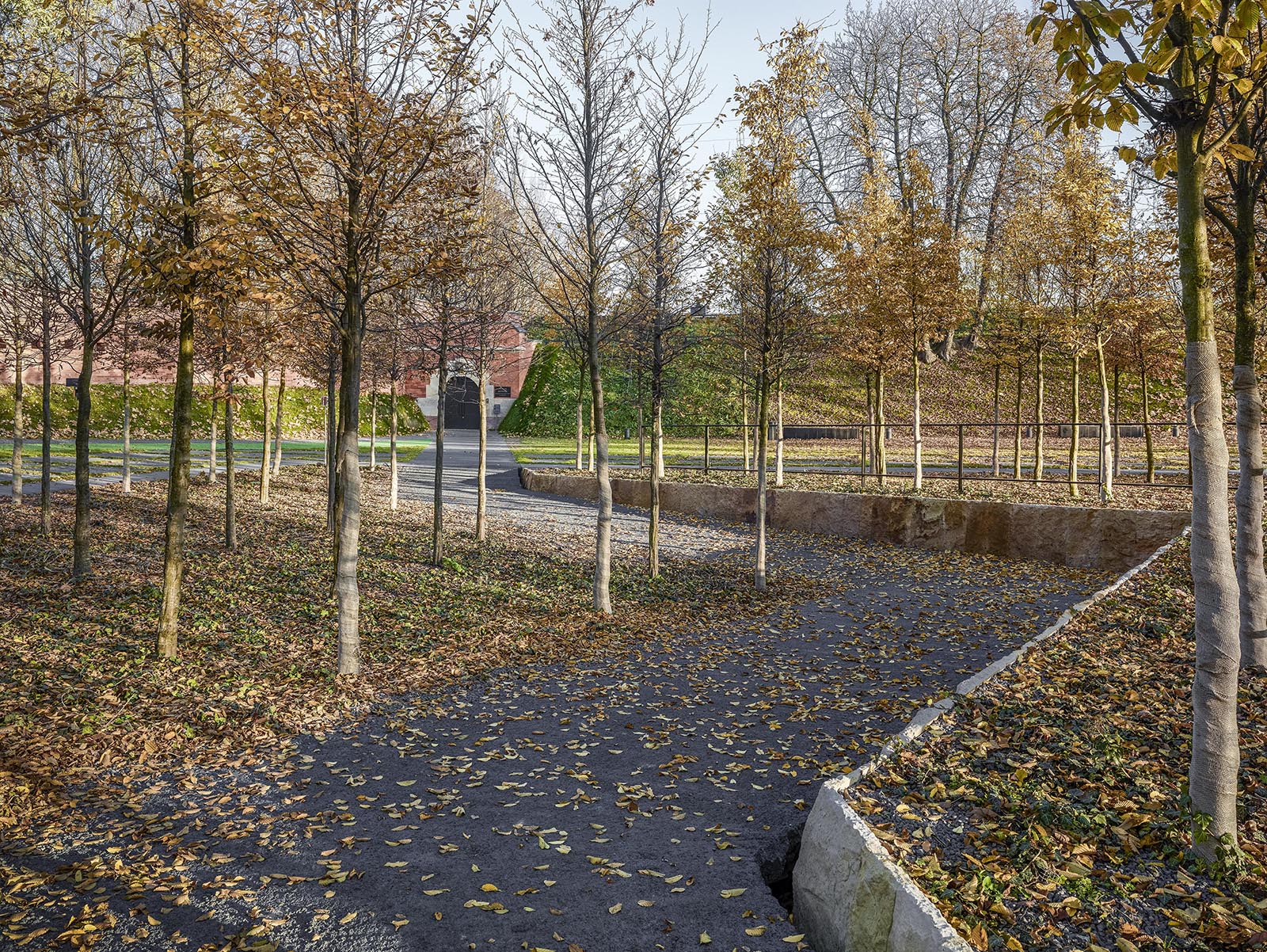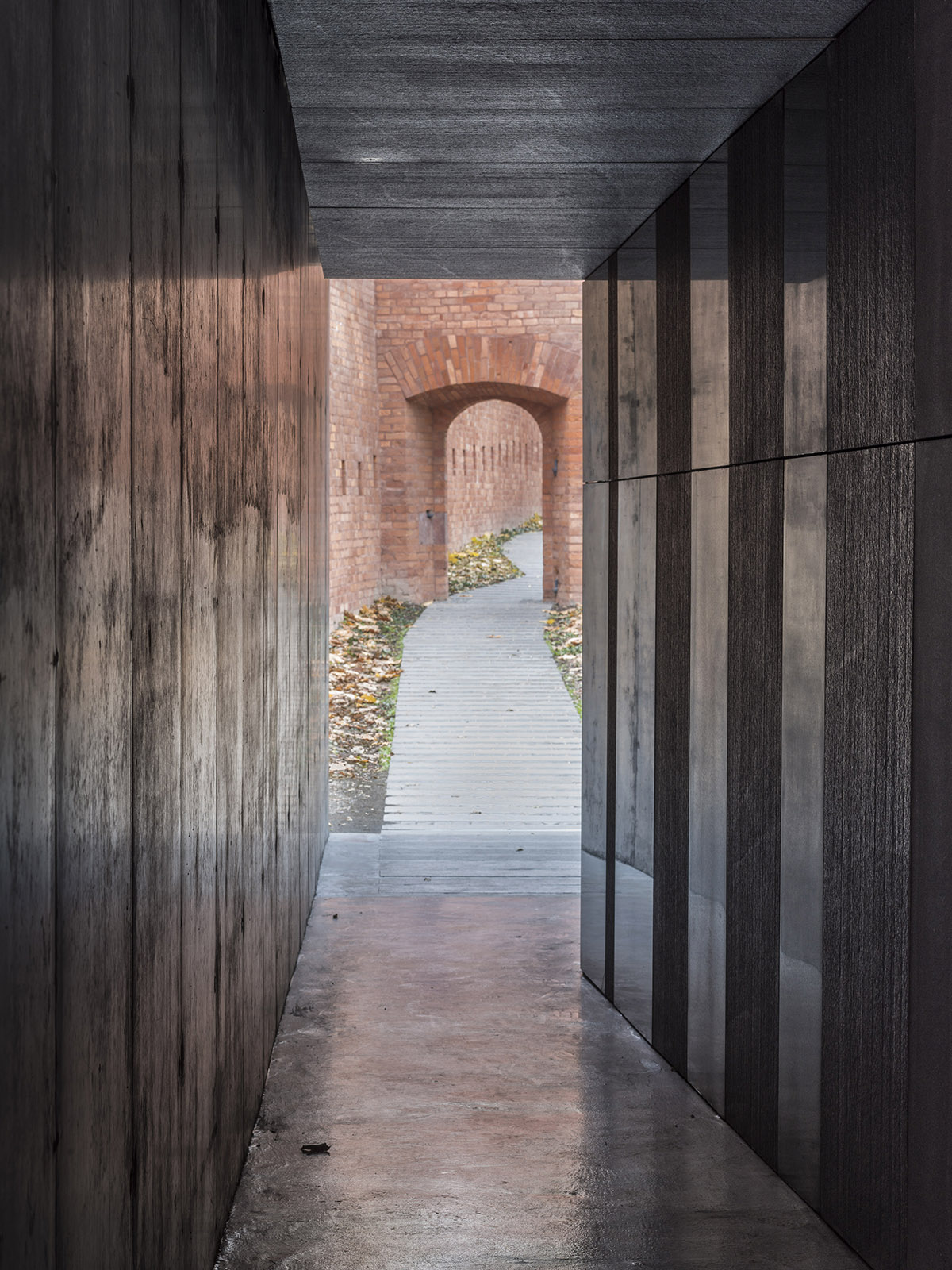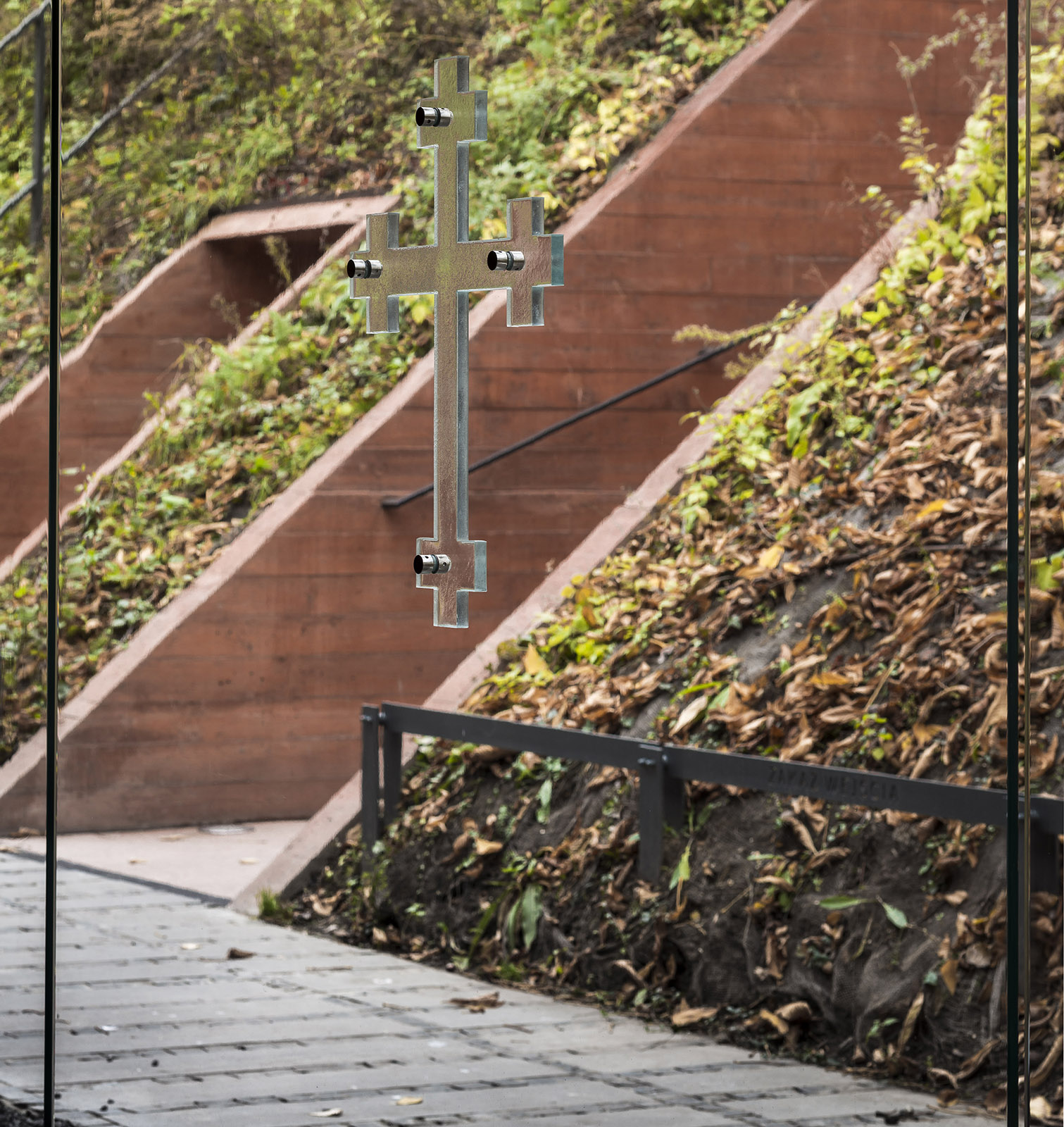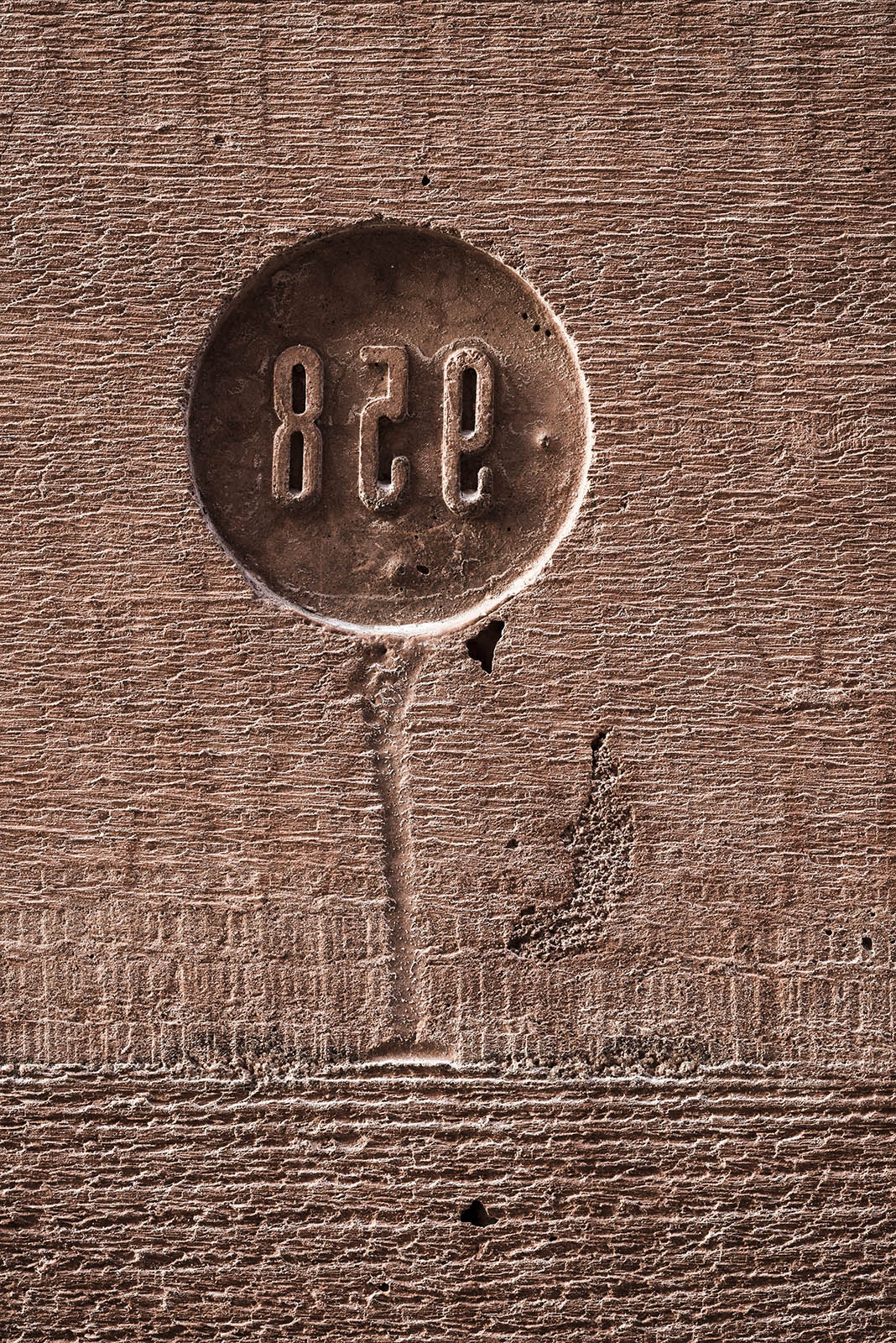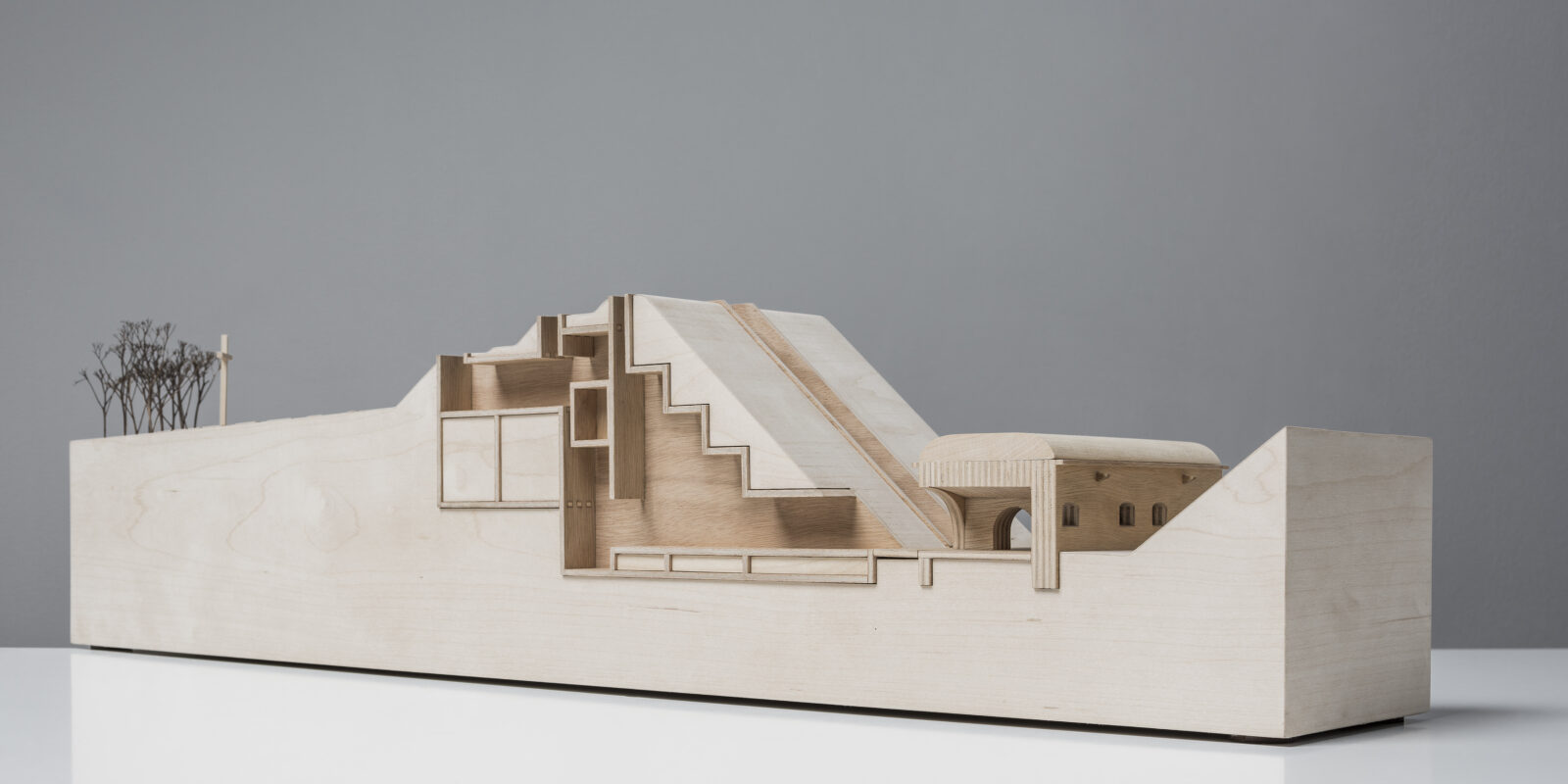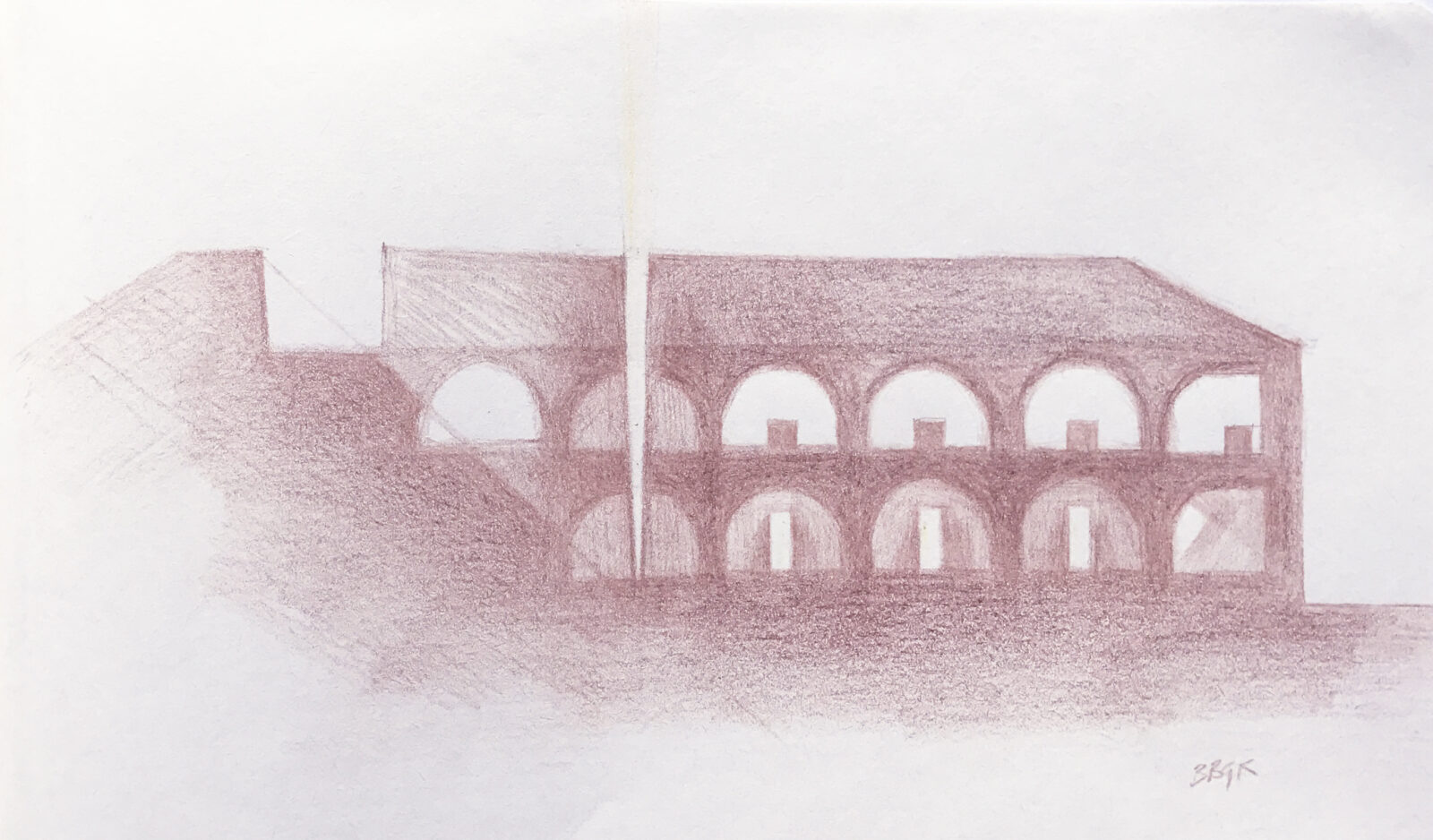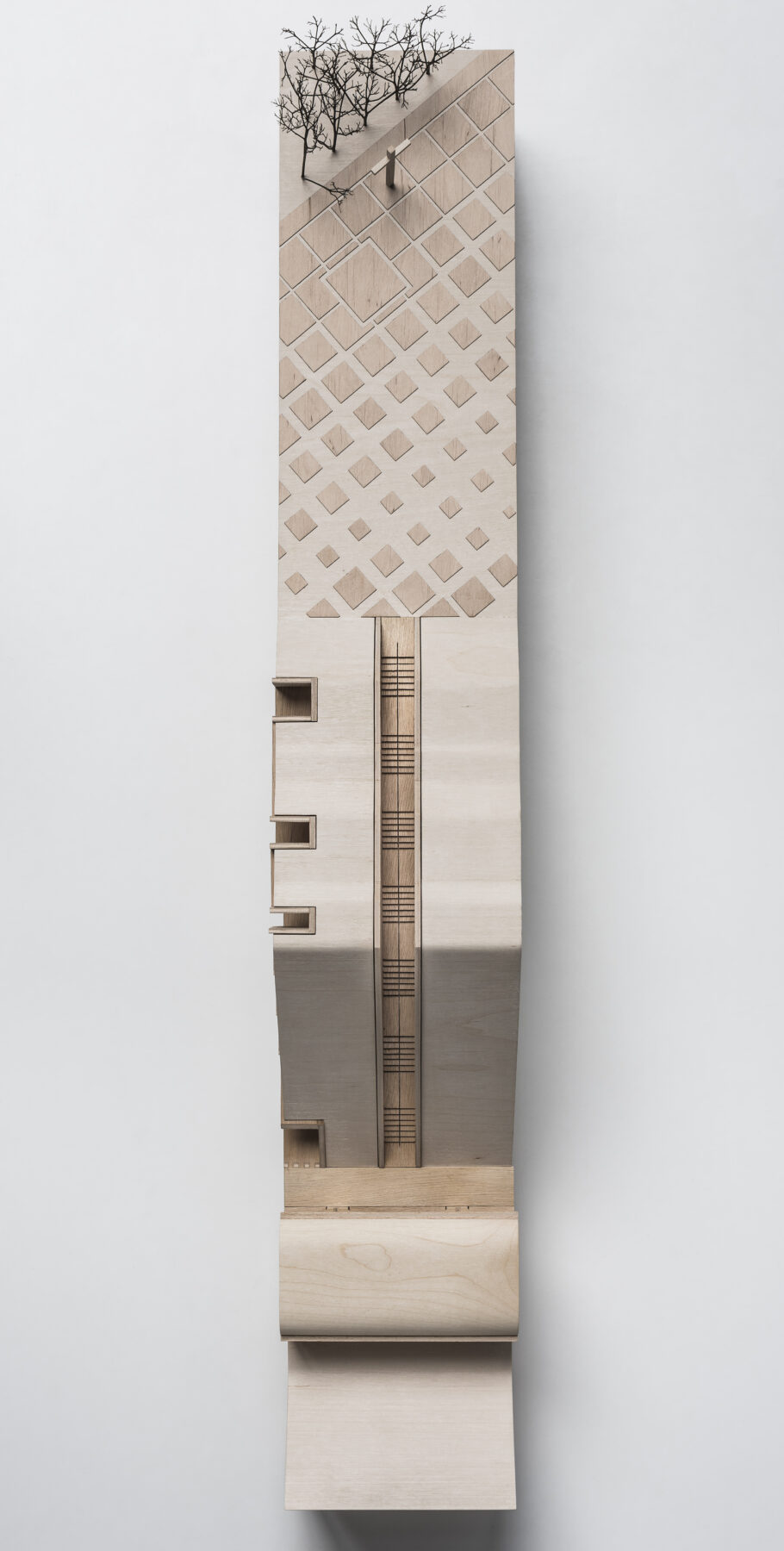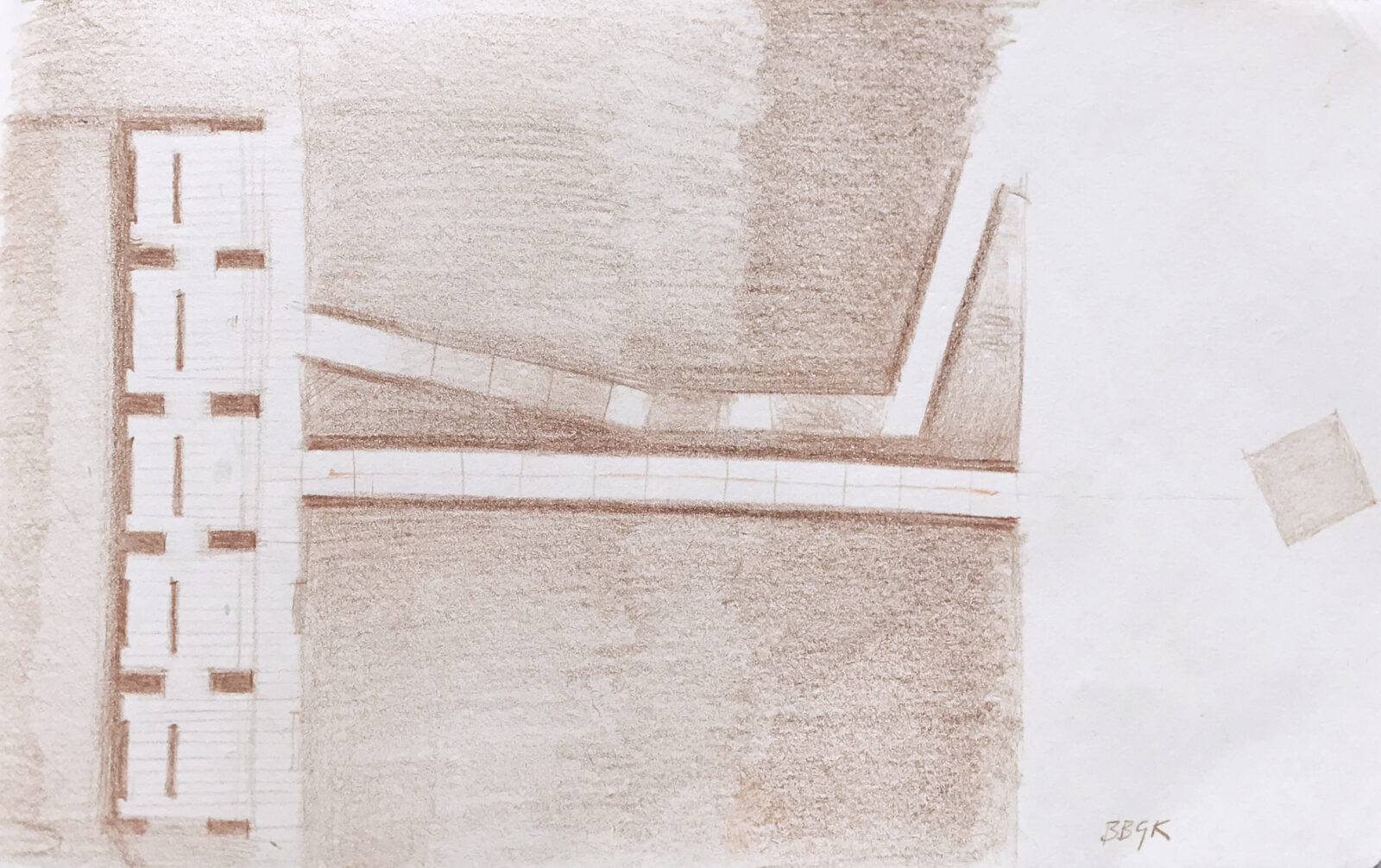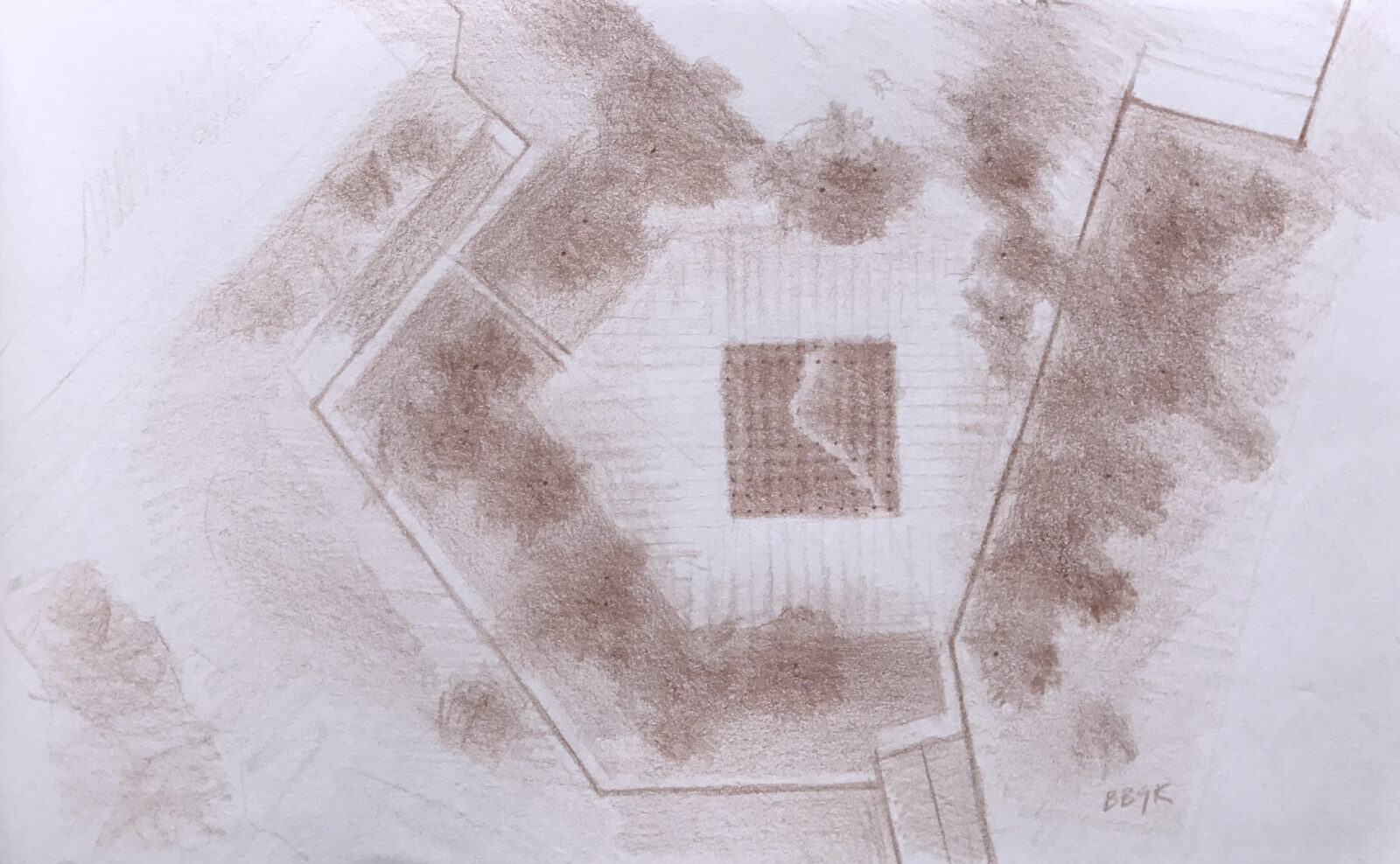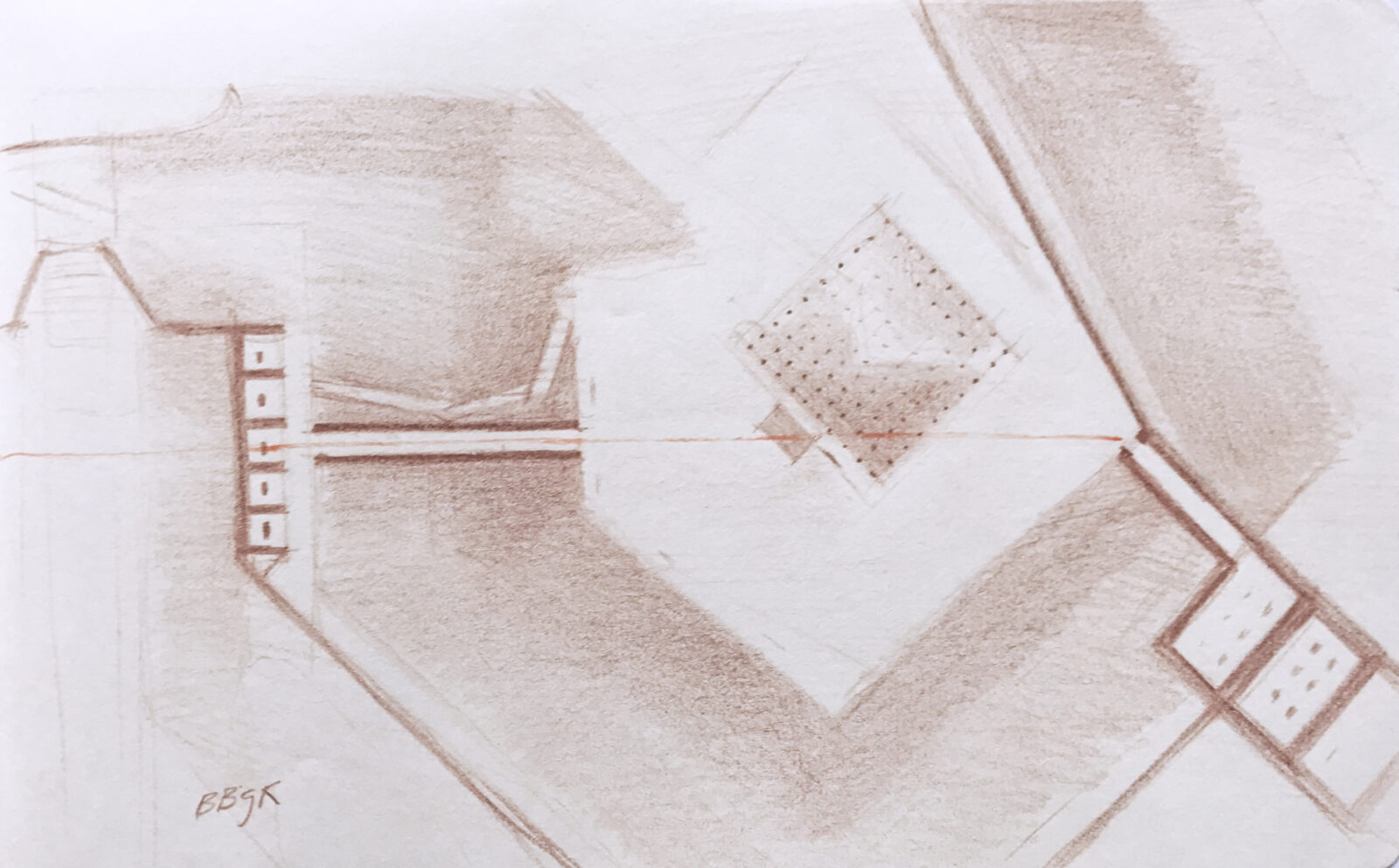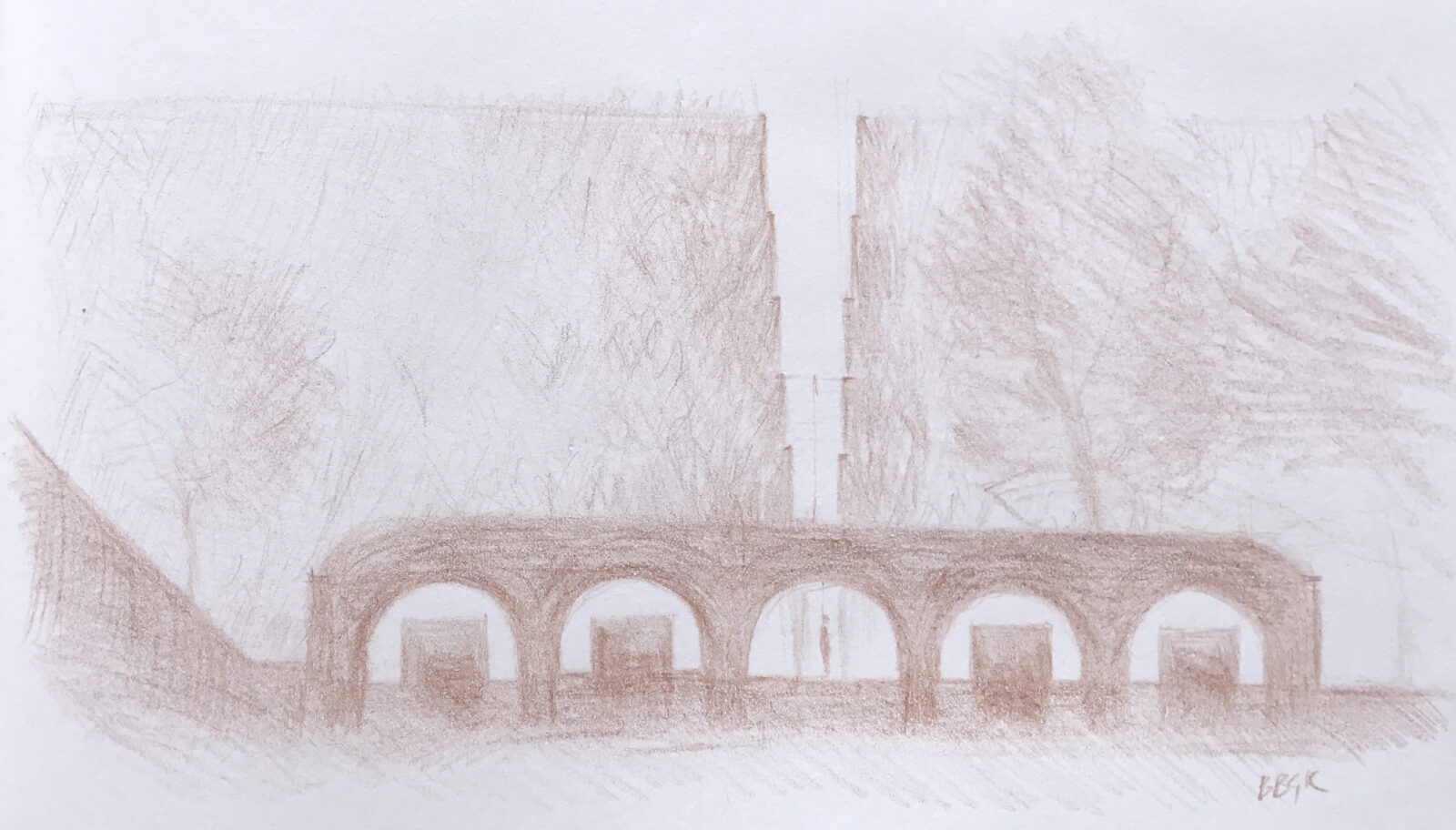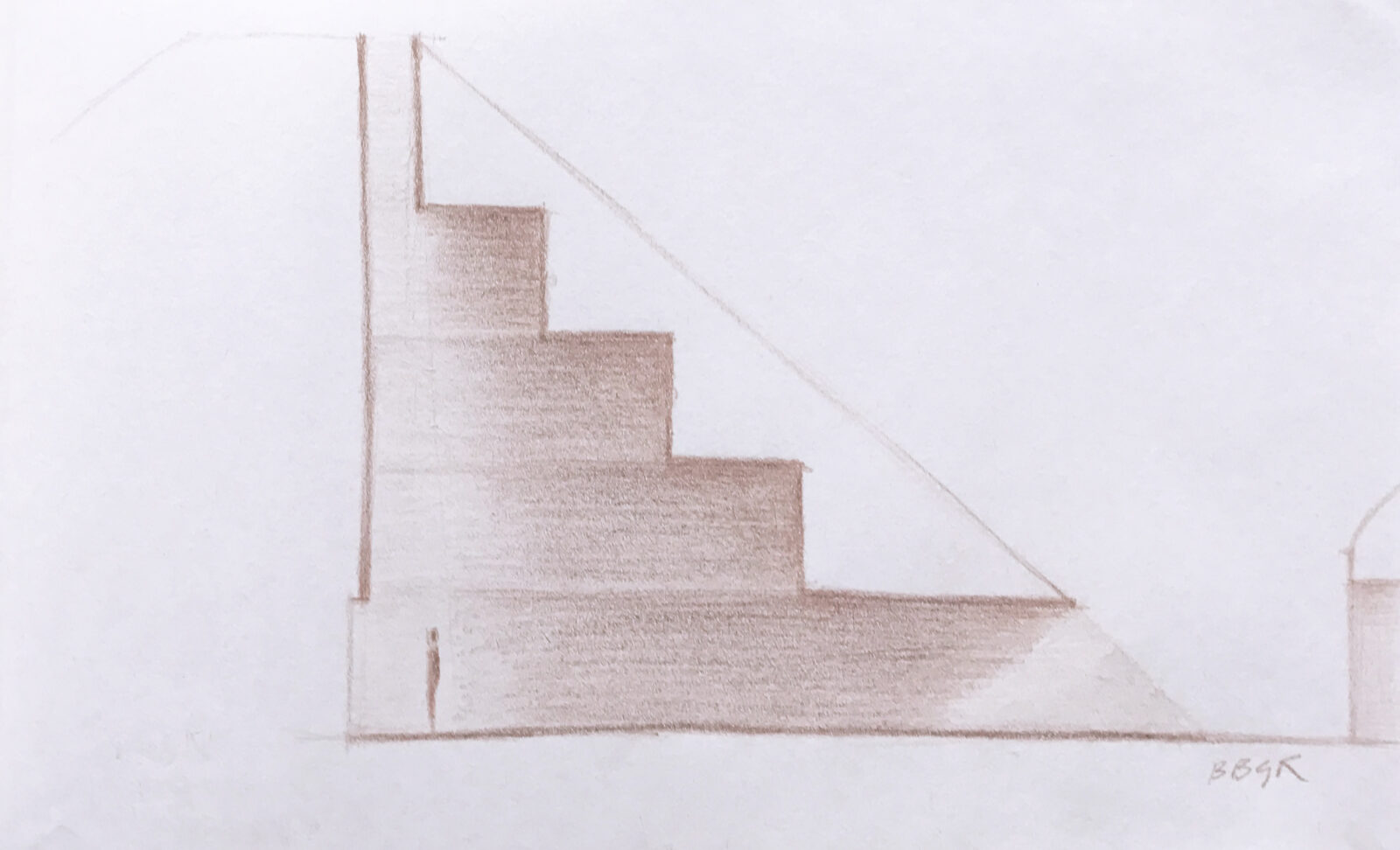The Katyń Museum in Warsaw designed by BBGK Architekci is a powerful statement in the discussion on the role of architecture in creating places of remembrance and commemorating difficult or tragic events from the community’s past.
In recent years, the area of the 19th-century Warsaw Citadel in Warsaw, Poland has been undergoing a transformation into a museum complex and memorial site that is unique on a European scale.
The historic area, which remained closed to the city for years, is now becoming a representative space commemorating the history of Poland.
This is one of the largest public developments among the numerous cultural investments following Poland’s accession to the European Union in 2004.
In 2023, the building of the Polish History Museum and the first of two planned buildings of the Polish Army Museum were officially opened to the public. Before that, in 2015, the Katyń Museum was inaugurated.
This restrained, minimalist design has become a powerful statement in the discussion on the role of architecture in creating places of remembrance and commemorating difficult or tragic events from the community’s past.
The museum was a finalist for the European Union Prize for Contemporary Architecture – Mies van der Rohe Award 2017 and received Poland’s most prestigious architectural prizes, including the Award of the Association of Polish Architects and the Architectural Prize of the Mayor of Warsaw. Soon, it will be 10 years since the Katyń Museum was established. However, its architectural expression remains just as relevant.
Architecture of Difficult Memory
The Katyń Museum project posed questions to architects about how to use the language of architecture to tell the stories of difficult, tragic events and create a space that honors both the memory of the victims’ families and collective remembrance. One such event is the Katyń massacre, one of the most tragic incidents in Poland’s 20th-century history. To this day, Katyń remains a symbol of the Soviet regime’s brutal policy against the Polish nation.
Designed by BBGK Architekci, the Katyń Museum presents the tragic events of the Katyń massacre that took place during World War II and commemorates 22,000 Polish military officers and state officials brutally murdered by Red Army. The Museum’s mission is to restore memory about the Katyń homicide and document its history.
It is not just a museum of the murder, but essentially a place created to commemorate the people.
The museum is located in the southern part of a 19th-century fortress—the Warsaw Citadel—and includes three historical buildings.
The museum constitutes an emblematic example of how pre-existing architecture can be employed to serve the designed purpose.
The faraway forests which had witnessed the horrible Katyń massacres were somehow made present in a military fortification in the center of the city.
The principal design premise was to create a space dedicated to silence and contemplation.
The architects selected simple materials such as brick, plaster, and stained concrete. The spatial layout of the Katyń Museum was designed as a differentiated experience of objects and spaces, forming a cohesive architectural narrative.
The whole complex was designed as a park, with a symbolic Katyń forest in the center of the main square. The 100 trees planted there refer to the truth about the dreadful war crime, which used to be concealed in the woods for more than 50 years.
The main exposition is arranged on two levels of the Caponier—a historic fortification structure. The first level contains information about the Katyń massacre, where the visitors can learn about historical facts and see exhibits found in the mass graves in Katyń forest. The second level of the exhibition is devoted to personal tragedies of the victims’ families, constituting a place for contemplation.
The exit of the museum turns into the Death Tunnel—a 20-metre-long passage constructed from black concrete, designed by Jerzy Kalina.
This dark corridor opens towards the Alley of the Missing Ones.
“Missing” because the alley is filled with empty pedestals, on which only the professions of the deceased are engraved: “police officer, doctor, lawyer, architect…” The path leads further to the third building—the arcaded cannon stand with glazed arcades, displaying 15 plaques with the names of the 21,768 murdered officers.
Wherever the narration of the exhibition required it, the architects used stained concrete, turning it into a means of architectural expression. Parts of letters and other personal belongings of the victims are imprinted on the concrete, continuing the exhibition outside the buildings.
The architectural expression here is especially strong. The gap between 12-meter-high walls dividing the Citadel leads in two directions: down—towards the plaques with the victims’ names, and up—towards the sky and light. An oaken cross placed among the trees concludes the dramatic story of Katyń.
Facts & Credits
Project title The Katyń Museum
Typology Museum
Location Warsaw, Poland
Architecture BBGK Architekci
Main authors of the Museum Jan Belina-Brzozowski, Konrad Grabowiecki
Photography Juliusz Sokołowski
Text provided by the architects
READ ALSO: ΤΟ ΕΛΛΗΝΙΚΟ ΚΑΛΟΚΑΙΡΙ // Από το Μπρούκλιν της Νέας Υόρκης, ο αρχιτέκτονας Γιώργος Κονταρούδης δημιούργησε το πρώτο Παθητικό Σπίτι της Σκοπέλου & των Βορείων Σποράδων | KWH Architecture
